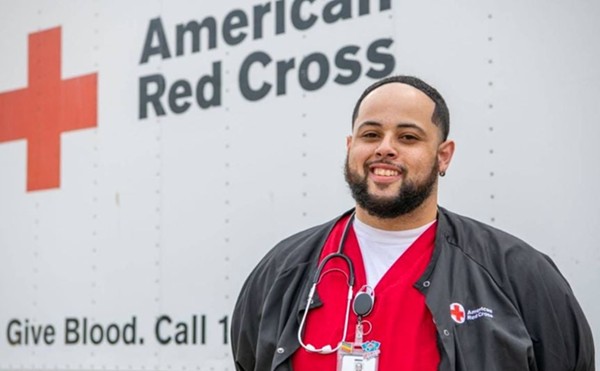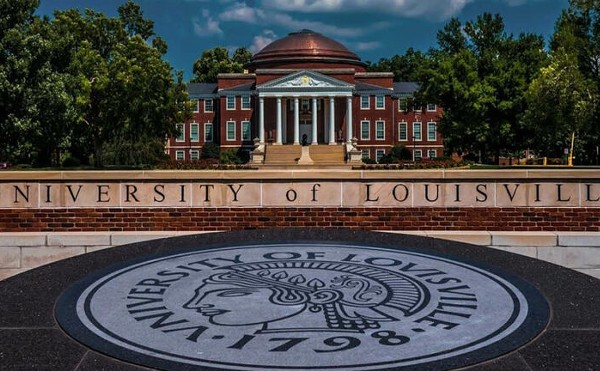Don’t expect WHAS-AM radio to add to its list of Peabody Awards, those prestigious national trophies bestowed on radio stations for in-depth news coverage and documentaries. The station has five in its trophy case, the last earned in 1998.
Why not expect more? Because it no longer makes sense to do award-winning radio documentaries or in-depth features in commercial radio. Economic sense, that is. Commercial radio has become a rip-and-read wasteland for journalism, a phone-it-in medium for news in which the “breaking news” mantra currently in vogue with TV news directors becomes an excuse for skipping radio stories that require multiple sources, in-depth reporting and reporters’ time.
“We’re not doing as many features and documentaries as in the past,” said 14-year WHAS veteran Paul Miles, currently assistant news director. “Our duties have changed.”
Miles said WHAS is responsible for producing newscasts for smaller Clear Channel stations around the state, including all newscasts for a Lexington station (WLAP), overseeing the Kentucky News Network and contributing to Clear Channel’s national network. All of that leaves little time for in-depth reporting.
“They don’t do that kind of stuff in commercial radio anymore,” said Brian Rublein, who was fired in 2001 after 21 years at WHAS. He’s now a public relations exec at Norton Healthcare. After suing Clear Channel, he agreed to a settlement that restricted what he can say about his former employer.
“You’re not going to see the kind of things we did because it doesn’t fit into the plan,” he said. “The responsibility of the corporation is to produce money for their shareholders. To really run a station the way it should be done, you have to encourage creativity and actively support it.”
Heidi Caravan, news director for the Public Radio Partnership, knows all about those multiple newscasts. Her decision to leave WHAS in 2000 was spurred by a Thanksgiving weekend of anchoring in which she says she did 27 newscasts. “You can’t do good work under that kind of pressure. I decided that wasn’t why I went to college.”
News directors like to talk about how they’re focused on breaking news and, of course, weather. That may be what their consultants tell them that viewers and listeners are interested in, and for a lot of folks it may be true.
Covering breaking news is easier for stations to pull off than in-depth journalism. To cover a local murder, for example, a reporter needs little preparation. There’s little background to check, and there’s not much local knowledge required, except for directions to the scene. In fact, a young, eager reporter who just moved here from Iowa could likely cover breaking news stories as well as a 20-year city beat veteran.
Miles said that while he’s more comfortable reporting in the field than anchoring, the on-site reporting aspect of his job has become less prominent.
“We’re not going out for a single homicide in Louisville; it’s becoming not so unusual to do that by phone. I wish we could but we just can’t get out of the office,” Miles said.
News directors would like us to think that brand of reactive reporting is the epitome of excellence, with local TV and radio media clustering at breaking news sites battling to what is commonly a dead heat in the race to broadcast the news. Remember the fury with which TV, and to a lesser extent, radio, stations battled to be first on the air with the David Camm verdict last spring?
Where local news really gains value, however, is in hiring and encouraging enterprising reporters to follow beats, develop trusted sources and investigate issues that could potentially have a real effect on listeners.
That’s where radio, the business, has gotten the best of radio, the journalism delivery mechanism. Radio, the business, requires its news staff to be efficient in delivering frequent newscasts with little resources. At Clear Channel, larger-market stations provide news for smaller-market stations, thus eliminating the need to fully staff the smaller-market stations.
Caravan believes that opens the door for local public radio stations to deliver a needed product in the market. Since 2004, she’s led a seven-person staff that swept the radio portion of local Society of Professional Journalists awards this spring, including those for feature reporting and documentaries. (WHAS used to win a lot of those awards.) Caravan said her reporters have been given creative license, that “no idea is foolish.”
That’s good for reporters at public stations. Their commercial brethren, on the other hand, have no time to flex creative muscles to produce memorable and exclusive pieces. And so talented journalists find other media for their talents, sometimes TV or print and, increasingly, online outlets.
Radio used to be a tried-and-true path to upward mobility in journalism. Legends such as Cronkite and Murrow started in radio, as did several local newsmen and women in the early days of TV. More recently, WHAS-TV’s Joe Arnold moved to TV only after his popular all-night radio show on WHAS-AM was canceled by Clear Channel in favor of a syndicated program that undoubtedly cost the corporation less to produce.
Susan Sweeney Crum followed a solid reporting stint on WHAS radio into television, becoming a WDRB-TV anchor. Now she’s happily anchoring afternoon radio newscasts at WFPL-FM.
Radio today is more of a steppingstone to corporate America. Witness the rise of former WHAS newsman John Asher among the suits at Churchill Downs Inc., or the fact that Rublein is now doing P.R. Dan Burgess and Bob Lauder, stalwarts of WHAS radio’s heyday, are now P.R. execs at Doe Anderson and Bandy Carroll Hellige, respectively.
More recently, WHAS sports reporter Scott Jennings moved from the station’s staff to become a political operative in the White House, where he has a nice title, deputy political director, and reports to Karl Rove.
The best hope for local radio journalism seems to be in the hands of Caravan and NPR, where reporters with the requisite passion for a good story can pursue them, and the station’s owners leave them alone.
Contact the writer at [email protected]





